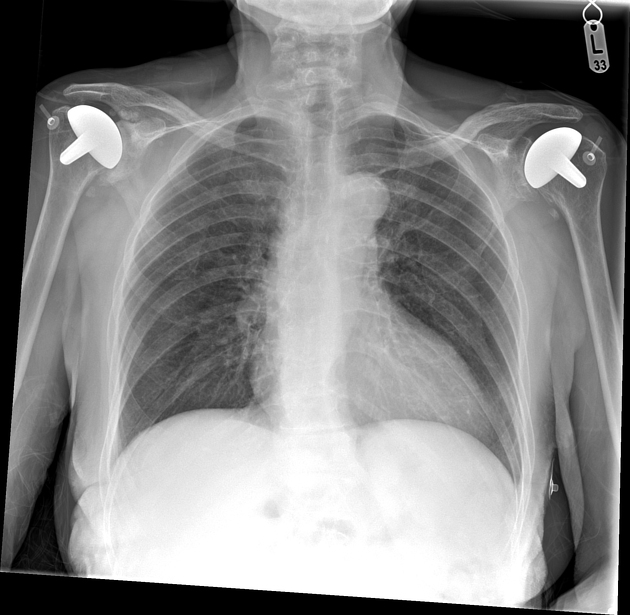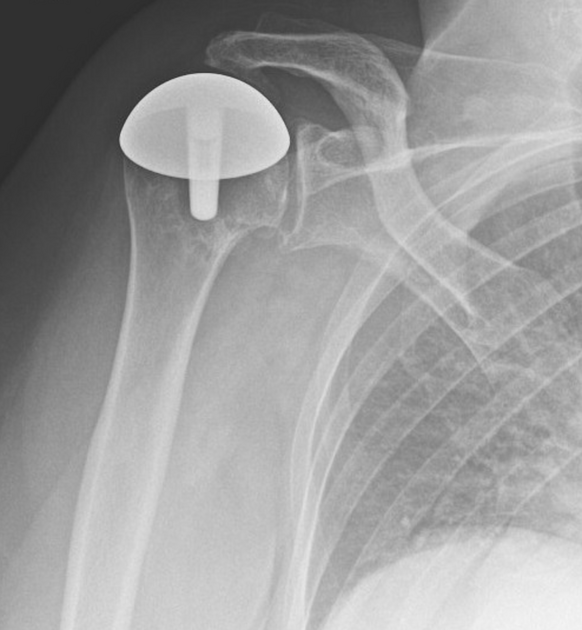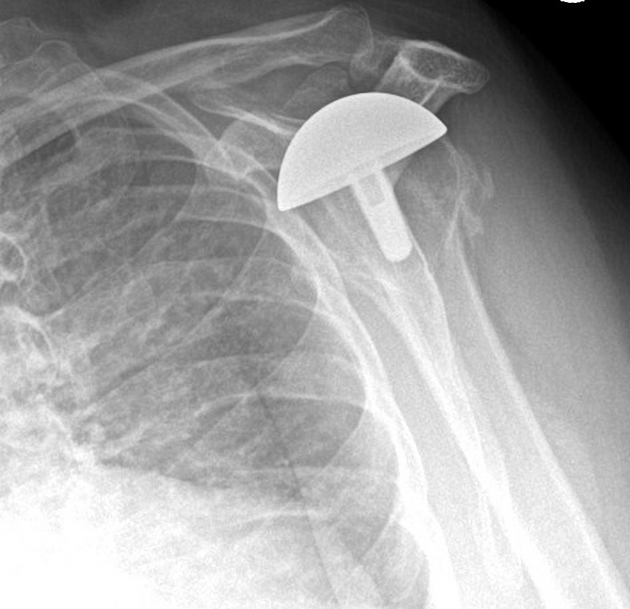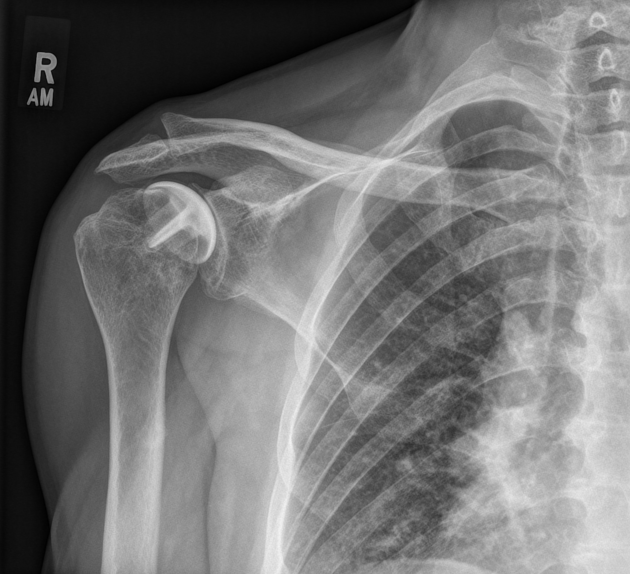Shoulder resurfacing arthroplasty is a form of partial shoulder joint replacement for the management of pathologies concerning the humeral head.
On this page:
History and etymology
The first shoulder arthroplasty was performed by Péan in 1893. The 3rd generation arthroplasties were introduced by Neer from the 1950s to 1970s 1.
Indications
Indications of shoulder resurfacing arthroplasty comprises disease processes affecting the humeral side of the joint and include 1:
large Hill-Sachs defects
large focal osteochondral injuries
congenital defects
Additional factors favoring anatomic total shoulder arthroplasty over other forms of shoulder arthroplasty are:
intact rotator cuff with good tendon and muscle quality
adequate humeral and glenoid bone stock
Contraindications
Contraindications of shoulder resurfacing arthroplasty are 1:
deficient humeral or glenoid bone stock
complex proximal humeral fractures
≥3 fragments displaced >1 cm (>5 mm greater tuberosity) or angulated >45°
high grade or full-thickness rotator cuff tears
extensive mucoid degeneration of the rotator cuff
Prosthesis design
The component for shoulder resurfacing arthroplasty consists of a metal alloy cap with a peg.
Procedure
The surgical technique includes the following steps:
reaming
fitting of a metal alloy cap
Complications
Complications of anatomic total shoulder arthroplasty include the following:
humeral head prosthetic component loosening
glenoid osteoarthritis
Radiographic features
Plain radiograph
Anteroposterior and lateral views are the initial tests for procedural planning and mainstay in postoperative control and follow-up examinations.
Preprocedural radiographs can aid in the diagnosis and the assessment of the bone stock. Furthermore, radiographs acquired in the erect position can be evaluated for the following features indicating rotator cuff disease 1:
static proximal humeral head migration (acromiohumeral distance <7 mm in erect position)
anterior humeral head subluxation
Post-operative radiographs should show the resurfacing cap flush-mounted to the humeral head and should not show any lucency around the peg. On the lateral view, it should be centered to the glenoid.
Follow-up radiographs should be evaluated for signs of glenoid osteoarthritis including the following:
joint space narrowing
subchondral cyst formation
posterior glenoid wear
US
Ultrasound can be used in the evaluation of the rotator cuff.
CT
CT is used for preoperative planning, in particular, the characterization of glenoid morphology and glenoid version measurements.
MRI
Like ultrasound can be used in the evaluation of the rotator cuff morphology and to exclude rotator cuff tears.
Radiological report
The radiological report should include a description of the following features:
Surgical planning:
glenoid morphology
glenoid version
quality and integrity of the rotator cuff
Postoperative control and follow up:
implant loosening
glenoid erosion
signs of infection
Outcomes
Resurfacing shoulder arthroplasty is the most minimalistic type of arthroplasty offering maximal preservation of the original bony anatomy including head-shaft angle humeral head version and posterior head translation.
Advantages
The main advantages of resurfacing shoulder arthroplasty include the following 1,4:
preservation of bone stock in young and active patients
diminished procedural time
lower incidence of humeral periprosthetic fractures
easy revision to convention total shoulder replacement if necessary
fewer metal artifacts on postoperative imaging
Disadvantages
The disadvantages of resurfacing shoulder arthroplasty are the risk of developing glenoid osteoarthritis requiring conversion to total shoulder arthroplasty 1.









 Unable to process the form. Check for errors and try again.
Unable to process the form. Check for errors and try again.